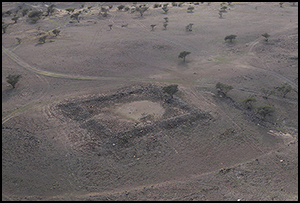Crossref Citations
This article has been cited by the following publications. This list is generated based on data provided by
Crossref.
Farahani, Alan
2020.
Encyclopedia of Global Archaeology.
p.
1.
Nemati, Mohammadreza
Mousavinia, Mehdi
Sauer, Eberhard
and
Cereti, Carlo G.
2020.
Largest Ancient Fortress of South-West Asia and the Western World? Recent Fieldwork at Sasanian Qaleh Iraj at Pishva, Iran.
Iran,
Vol. 58,
Issue. 2,
p.
190.
Dabrowski, Vladimir
Bouchaud, Charlène
Tengberg, Margareta
Zazzo, Antoine
and
Priestman, Seth
2021.
Archaeobotanical analysis of food and fuel procurement from Fulayj fort (Oman, 5th-8th c. CE) including the earliest secure evidence for sorghum in Eastern Arabia.
Journal of Arid Environments,
Vol. 190,
Issue. ,
p.
104512.
Durand, Caroline
2021.
From ‘ovoid jars’ to ‘torpedo jars’: Investigations into bitumen‐lined transport containers in the Gulf and the Indian Ocean in antiquity (second century BCE–third century CE).
Arabian Archaeology and Epigraphy,
Vol. 32,
Issue. 1,
p.
21.
Düring, Bleda S.
2022.
Beyond dots with dates: A landscape approach to the Sohar hinterlands.
Arabian Archaeology and Epigraphy,
Vol. 33,
Issue. 1,
p.
170.
Tomber, Roberta
Spataro, Michela
and
Priestman, Seth
2022.
Early Islamic Torpedo Jars from Siraf: Scientific Analyses of the Clay Fabric and Source of Indian Ocean Transport Containers.
Iran,
Vol. 60,
Issue. 2,
p.
240.
Zerai, Abraham
Guerrini, Camilla
Łucejko, Jeannette J.
Ribechini, Erika
Piccirillo, Anna
Massa, Serena
Mandelli, Chiara
Medin, Tsegai
Re, Alessandro
Lo Giudice, Alessandro
Davit, Patrizia
and
Gulmini, Monica
2022.
The organic residues of lining in transport vessels from the Red Sea coast of Eritrea: a further element to understand past commercial relations.
Heritage Science,
Vol. 10,
Issue. 1,
Dabrowski, Vladimir
Bouchaud, Charlène
Desormeau, Xavier
Herveux, Linda
Chambraud, Elora
Ryan, Saskia E.
and
Tengberg, Margareta
2024.
A tale of new crops in the arid Arabian Peninsula oasis from antiquity to the early Islamic period.
Vegetation History and Archaeobotany,





